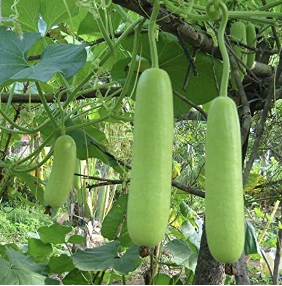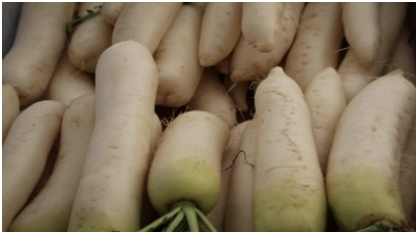🦴 Radish
Cultivation, Important Points
-
Raphanus sativus -
Family: Cruciferae
-
Origin: Europe
-
Sporohytic self-incompatability
-
Good source of vitamin C (15-40 mg/100 gm).
-
Mustard saw fly and painted bug are the pest of radish.
-
Roots of radish prepared for seed production is known as
Steckling -
Brown heart is common in radish is due to
borondeficiency
-
Seed rate: 5.5-11 kg/ha.

Varieties
- Temperate varieties are biennial in nature.
- Tropical varieties can produce seeds both in tropical and temperature region of India.
- Asiatic Varieties:
Arka Nishant: Resistant to white rust, pithiness, premature bolting forking (Multiple diseases resistant).Pusa Chetki: Suitable for growing in hotter months.- Pusa Desi
- Pusa Rashmi
- Newari
- Japanese White
- Punjab Safed
- European Varieties:
- Chinese Pink
- Rapid Red, White tipped: Globe shaped
- Scarlet long
Scarlet Globe- White Icicle
Pusa Himani
- Hybrid Varieties:
- Pusa himani (Only variety which can be grown throughout the year)
- Pusa rashmi: Green type X Desi type
- Pusa Safed: White-5X x Japanese White
Turnip
- Botanical Name: Brassica raga
- Family: Cruciferae
- Origin: Indo-China
- Inflorescence: Terminal raceme
- Turnip has strong sporophytic self-incompatability.
- NaCl and CO2 is used to overcome self-incompatability.
- Thinning is important in turnip to maintain optimum plant to plant spacing and required population.
- Two types:
- Asiatic
- Pusa kanchan
- Pusa swab
- Punjab Safed
- European
- Golden Bold
- Pusa Swarnima
- Pusa Chandrima
- Asiatic
- It can be grown at an elevation of 1500 msl or above but it is not suitable for growing in low lands of wet tropics.
-
Raphanus sativus -
Family: Cruciferae
-
Origin: Europe
-
Sporohytic self-incompatability
-
Good source of vitamin C (15-40 mg/100 gm).
-
Mustard saw fly and painted bug are the pest of radish.
-
Roots of radish prepared for seed production is known as
Steckling -
Brown heart is common in radish is due to
borondeficiency
-
Seed rate: 5.5-11 kg/ha.

Varieties
- Temperate varieties are biennial in nature.
- Tropical varieties can produce seeds both in tropical and temperature region of India.
- Asiatic Varieties:
Arka Nishant: Resistant to white rust, pithiness, premature bolting forking (Multiple diseases resistant).Pusa Chetki: Suitable for growing in hotter months.- Pusa Desi
- Pusa Rashmi
- Newari
- Japanese White
- Punjab Safed
- European Varieties:
- Chinese Pink
- Rapid Red, White tipped: …
Become Successful With AgriDots
Learn the essential skills for getting a seat in the Exam with
🦄 You are a pro member!
Only use this page if purchasing a gift or enterprise account
Plan
- Unlimited access to PRO courses
- Quizzes with hand-picked meme prizes
- Invite to private Discord chat
- Free Sticker emailed
Lifetime
- All PRO-tier benefits
- Single payment, lifetime access
- 4,200 bonus xp points
- Next Level
T-shirt shipped worldwide

Yo! You just found a 20% discount using 👉 EASTEREGG

High-quality fitted cotton shirt produced by Next Level Apparel